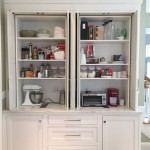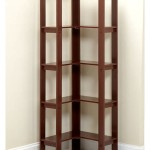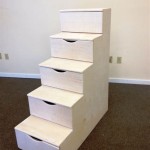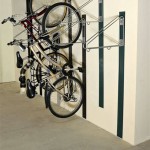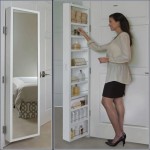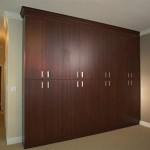Storage Ideas For Open Plan Living
Open plan living has become a popular design choice for modern homes, offering a spacious and airy feel. However, integrating multiple living areas into a single, unified space presents unique storage challenges. Thoughtful storage solutions are essential for maintaining a clutter-free and organized open plan living area, ensuring both functionality and aesthetic appeal. This article explores various storage strategies that effectively address the specific needs of open plan spaces.
Leveraging Vertical Space
One of the most effective methods for maximizing storage in open plan living is to utilize vertical space. Walls often represent unused potential for storage solutions. Floor-to-ceiling shelving units are an excellent option, particularly in areas designated as home offices or libraries. These units can accommodate books, decorative items, and storage boxes, creating a visually appealing and functional wall feature. Consider incorporating a mix of open shelves and closed cabinets within the unit to conceal less aesthetically pleasing items while showcasing more decorative pieces. This blend offers both practicality and visual interest.
Custom-built storage solutions can be tailored to the exact dimensions of the space, maximizing every inch of available wall area. This approach is particularly advantageous for irregularly shaped rooms or areas with architectural quirks. A custom-designed unit can seamlessly integrate around windows, doorways, or built-in features, providing a unified and cohesive storage solution. Furthermore, incorporating adjustable shelves allows for flexibility in accommodating items of varying sizes.
Wall-mounted cabinets and shelves are another effective way to utilize vertical space without occupying valuable floor space. These options are particularly suitable for smaller open plan areas where floor space is at a premium. Wall-mounted cabinets can be used to store items such as dishes, glassware, or board games, while open shelves can display plants, picture frames, or decorative objects. Consider using floating shelves for a minimalist and contemporary look. Their seamless appearance can enhance the sense of openness and airiness within the space.
For areas with high ceilings, installing upper cabinets or loft-style storage can provide substantial storage capacity. These elevated storage solutions are ideal for storing seasonal items, infrequently used appliances, or bulky items that would otherwise clutter the main living area. Access to these higher shelves can be facilitated with a sturdy step ladder or a designated storage stool. Ensure that the style and finish of the upper cabinets complement the overall design aesthetic of the open plan space.
Multi-Functional Furniture
Incorporating multi-functional furniture is a key strategy for optimizing storage in open plan living areas. Furniture pieces that serve multiple purposes not only save space but also contribute to the overall organization and efficiency of the living area. Consider investing in a sofa with built-in storage compartments underneath the cushions. These compartments can be used to store blankets, pillows, or magazines, keeping them readily accessible yet out of sight.
Coffee tables with drawers or lift-top mechanisms offer valuable storage space for remote controls, books, or other small items that often clutter the living area. A lift-top coffee table can also function as a makeshift dining table or workstation, providing added versatility. Similarly, ottomans with removable lids can serve as both seating and storage, offering a convenient place to store toys, games, or extra throw blankets.
Console tables with built-in shelves or drawers are excellent additions to entryways or hallways within the open plan space. These tables can provide a designated spot for keys, mail, and other everyday essentials, preventing clutter from accumulating on countertops or other surfaces. A console table can also serve as a media console, housing electronic devices and media accessories while keeping cords neatly organized. Choose a console table that complements the style of the surrounding furniture and décor.
Dining benches with storage compartments are a practical and stylish seating option for dining areas within an open plan space. These benches can provide additional seating while also offering storage for linens, tableware, or cookbooks. Consider using benches with removable cushions to access the storage compartments easily. Alternatively, opt for dining chairs with built-in shelves or drawers for storing smaller items such as napkins or placemats.
Creating Defined Zones with Storage
In open plan living, defining distinct zones for different activities is crucial for maintaining order and functionality. Storage solutions can play a significant role in creating these zones while also providing practical storage. A bookshelf or shelving unit can serve as a room divider, separating the living area from the dining area or the home office space. This creates a visual barrier that helps to define the boundaries of each zone while also providing ample storage for books, decorative items, or office supplies.
A strategically placed credenza or sideboard can function as a room divider between the kitchen and the living area. This provides a surface for serving food or displaying decorative items, while also offering storage for kitchen essentials such as dishes, glassware, or serving utensils. Consider using a credenza with doors or drawers to conceal less visually appealing items and maintain a clean and organized look.
Storage benches can be used to define the transition between the entryway and the main living area. These benches provide a place to sit and remove shoes, while also offering storage for shoes, hats, scarves, or other outerwear. A storage bench can also serve as a visual cue that marks the boundary between the entryway and the rest of the open plan space. Consider using a bench with a cushioned seat for added comfort and style.
Rugs can also be used to define zones within an open plan living area. A large area rug can delineate the living room area, while a smaller rug can define the dining area or the home office space. Using rugs of different colors, patterns, or textures can further enhance the separation between zones. Be sure to choose rugs that are appropriate for the size and shape of each area and that complement the overall décor of the open plan space. Adding storage solutions within each zone, such as baskets or small cabinets, can help maintain organization and prevent clutter from spilling over into other areas.
The principles of open plan living necessitate careful planning and implementation of storage solutions. By utilizing vertical space, incorporating multi-functional furniture, and creating defined zones with strategic storage placements, it is possible to achieve a well-organized and visually appealing open plan living area. A clutter-free environment enhances the flow of the space and allows for a more comfortable and enjoyable living experience. It is essential to consider both the functional and aesthetic aspects of storage solutions to create a harmonious and balanced open plan design.

7 Ideas For Acing Your Open Plan Room S Storage Houzz

Need More Storage In Your Open Plan Kitchen Just Look Outside

11 Storage Solutions For Homes With Open Floor Plans

Open Plan Living Ideas For A Perfectly Successful Space Kitchen Inspiration Masterclass Kitchens

Yep That S Right These Small Living Room Ideas Will Pretty Much Solve Your Storage Plight

How To Increase Your Home S Storage Style

Luxury Open Plan Living Space Ideas Barbara Genda

Storage Ideas 8 Areas At Home You May Have Forgotten Lifestyle News Asiaone

Clever And Bespoke Storage Solutions Roselind Wilson Design

Room Tour Five Inspiring Living Rooms
Related Posts

